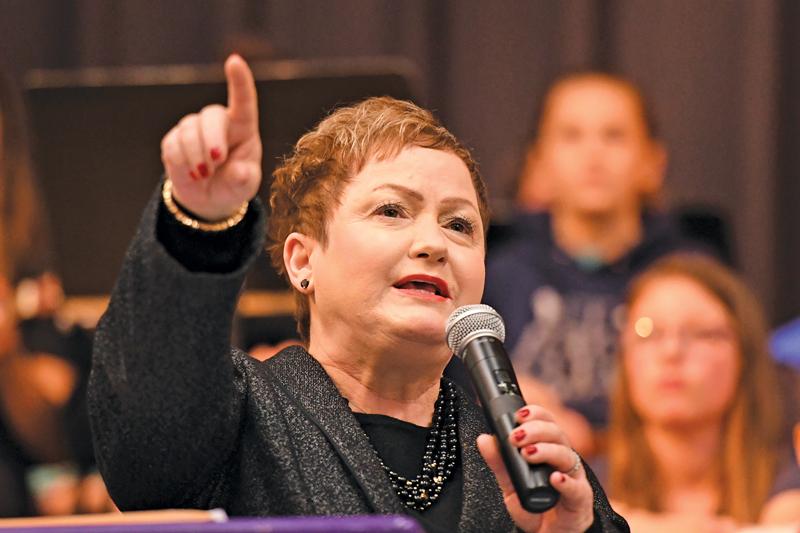“It’s been four months since we closed our schools for health and safety, and as we look four months into the future we have no way of knowing whether as a country we’ll be able to get this under control, or if this new normal will persist for a while,” Swift says. “But by having a fully developed framework with several settings on the dial, our families, our children, will at least be able to understand where we’ll be.”
When the district finalizes its plan at the end of July, those dial settings will include three learning models: virtual, in-person, and blended. AAPS has been fine-tuning its plans since Governor Whitmer released her MI Safe Schools Roadmap on June 30, which includes safety protocols for schools based on the status of the coronavirus pandemic.
The state’s plan allows for in-person instruction during Phase Four. But just days after its release, Whitmer said that in-person instruction this fall is in jeopardy because coronavirus cases were on the rise again.
Whitmer’s plan doesn’t require social distancing or masks for K-5 students. But schools have the authority to enact stricter requirements, and Swift says Ann Arbor’s “blended” plan “features all the CDC recommended practices, social distancing, and the wearing of PPE.
“We’re still working out the details of that because it’s a massive puzzle,” she says. “We are evaluating every single square foot in the district because it’s possible we’ll have to use other locations to make this work.”
She says that those students who are unable to learn fully virtually, including “our youngest students, our students with special needs, our students with second language needs … we’re looking at that [blended] middle setting as a way to conceivably provide more face-to-face for those students …”
If and when students return to classrooms in the blended model, it will be at “a roughly 50 percent occupancy rate,” Swift says. For middle and high schools, “that gets our students in at least twice a week.”
The district will monitor the infection rate in the community and in every school week by week. And families will always be able to choose a fully virtual learning experience instead.
But virtual learning for 2020-21 will look entirely different from how students finished their 2020 school year. “Our teachers did an extraordinary job in just an extremely tough situation,” Swift says about the abrupt closure in March. Going forward, “we’re talking about synchronous instruction, we’re talking about a learning management system that makes it easy to find what you need. We’re talking about a graded setting that’s rich in direct feedback … I would say it looks a lot more like school.”
But students won’t be on screens six or seven hours a day, she emphasizes. “They may do some independent reading, they may do some maker kinds of activities, they need to get outdoors and get some physical activity.
Swift says parent attitudes fall across the spectrum. Some want their child to be enrolled virtually because they or a family member have a medical condition. Others tell her that “if the doors are open, their children will be there.”
Schools, Swift says, are not a no-risk environment. “The very nature of community spread means that none of us is in a perfect bubble. We have great support from Washtenaw County Health Department and our own health officer. We are putting together teams for contact tracing and health screening. We have all the responsible components in our reopen plan. But that to me is kind of the bumper sticker,” she says. “We will be responsible, not reckless … We will land on the side of caution.”
AAPS will offer a fully online opportunity for every grade level in the fall as part of a “virtual classroom–what people would think of as an online school.” After the plan is released, parents will have some time to consider and settle into a choice that works for their family–and will be able to change their minds during the school year.
Faced with a projected shortfall of more than $7 million, Swift says the district will be amending its budget throughout the year. “There are so many things we don’t know the answer to, and one of those is the infusion of funds from the federal level.”
Swift says the pandemic “laid bare” all the roles schools play in the social fabric of a community. “People think of us serving students when our doors are open, but we’re serving students twenty-four-seven,” she says. “Over 350,000 meals distributed in the past four months, 15,000 calls to our tech support center answered, 3,500 devices passed out … It’s been a massive effort to deploy every resource we have in service to children and their families.
“The message we want folks to know is that we will continue to serve our children, and we will meet our children and families where they are … and we will persevere.”


